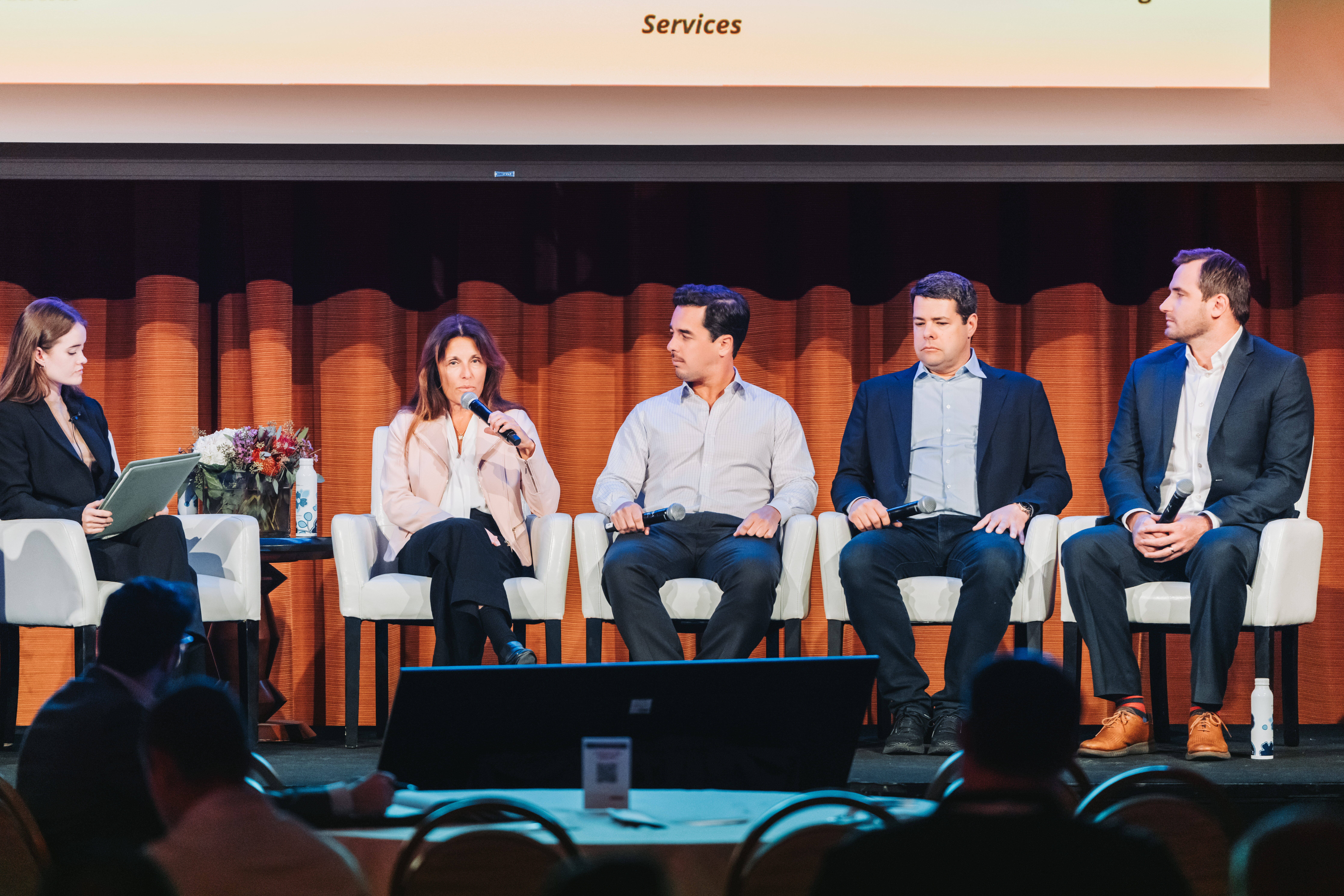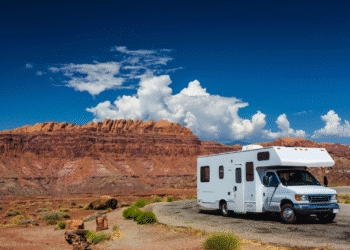Powersports lenders reimagine tech, buyer programs
Powersports Finance Summit 2024
Powersport lenders are enhancing technology and buyer programs to improve customer and dealer experiences heading into 2025.
Affordability concerns have dominated the powersports industry for much of this year, dampening consumer confidence and demand, and revealing gaps in the market that lenders are working to address.
Because many consumers still have their hands in their pockets, retail sales have suffered, promotional activity has increased and inventories have idled across the industry. These challenges add to the increasing need for lenders to have easy-to-use platforms available for consumers and dealers navigating the turbulent market.

In September, average powersport sales were down 3.6% year over year, according to an Oct. 7 BMO Capital Markets note.
YoY sales also declined, with powersport sales down 5.4% in August, 4.6% in July, 3% in June, 3.7% in May and 0.9% in April, according to BMO.
Promotional activity across the industry, though “generally similar” to activity in 2023, is “slightly more aggressive” compared with pre-pandemic activity, the BMO note stated.
Industry executives at the recent PowerSports Finance Summit 2024 were optimistic about the year ahead, pending additional rate cuts by the Federal Reserve and increased consumer confidence.
Panelists at the summit also reported making strides to bridge gaps in the consumer experience and between dealer needs and available support.
Intentional with tech
The powersports industry is facing a technology gap between consumer needs and lender adoption. Lenders at the summit highlighted the importance of implementing technology where it matters.
“It’s not that the market is moving online to a fully digital experience,” Anthony Moses, global chief strategy and innovation officer at Yamaha Financial Services, said during a panel discussion at the summit. “It’s that you now have different segments of customers that start to have different preferences.”

Winston-Salem, N.C.-based lender Sheffield Financial is using technology to “complement” existing consumer services without removing more traditional services, Susan Andersson, head of national accounts and senior vice president, said at the summit. “At Sheffield, we do have technology out there for those who want it, but we still have 50 loan processors in there taking calls at all times,” she said.
Improving dealer, consumer relations
Lenders at this year’s summit are also using prequalification tools to make the shopping and financing process easier for consumers and funding faster for dealers.
Sheffield, for one, is using such a tool to provide faster service to consumers who browse online before landing at the dealership.
“All they have to do is put in their mobile number and last four digits of their Social Security number,” Andersson said of the prequal tool. “The decision is rendered within seconds, and it gives that customer the confidence to go into the dealership knowing that they’re pre-approved.”
Prequalification tools and QR codes have simplified the loan process for consumers and dealers, summit panelists said.
“Dealers can put [QR codes] anywhere throughout the dealership, whether it’s on a hang tag or positioned anywhere on the equipment,” Andersson said, adding that some dealers have used QR codes as magnets placed on the equipment. “Our goal is to create an easier experience for the customer and for the dealer.”

Octane’s prequalification tool helps increase consumer confidence while supporting dealers’ needs for added technology and faster financing, Mark Davidson, co-founder and chief growth officer at the New York City-based-based lender, said at the summit.
“Customers can get prequalified, either sitting at home or if they’re walking the showroom floor,” he said. “If they are pre-approved, it gives them confidence to move forward with the sale, and the dealers love it because they know that the customer has not only the will to buy, but also the means to buy.”
Octane is “exploring” the benefits of bringing prequalification to the marine market after entering the segment in October, Davidson said.
The lender is focused on “meeting customers where they are” while giving dealers “the ability to use tools” through hang tags or Instagram ads with links, Jon Vestal, Octane’s head of powersports and outdoor power equipment, said at the summit.
“We consistently ask for feedback from OEMs and dealers, and whatever they need is the direction that we’re going.” — Jon Vestal, Octane
“At the end of the day, we consistently ask for feedback from OEMs and dealers, and whatever they need is the direction that we’re going.”
Prioritizing CX, buyer programs
Lenders at the PowerSports Finance Summit also highlighted the need to determine which traditional processes and buyer programs benefit consumers and which are ready to update.
“We still have no voicemail. We don’t have it so that when customers or dealers call in, they’re getting someone on the phone right away,” Sheffield’s Andersson said.
Harley-Davidson Financial Services’ (HDFS), for example, plans to review each of its programs — including those for limited credit borrowers and first-time buyers — for ways to increase motorcycle sales while maintaining the lender’s risk appetite, Yordanka Martin, chief risk officer at HDFS, said at the summit.

HDFS’ efforts to reimagine its current offers include the decision to add certified pre-owned and used motorcycles to its Flex Financing program in 2025.
The move comes as Harley Davidson’s Q3 North American motorcycle sales fell 10% YoY to 24,600 units, according to an Oct. 24 earnings release. Sales were driven down by a decline in consumer traffic given elevated interest rates, according to the release.
However, HDFS’ retail finance receivables were unchanged YoY and sequentially at $7 billion in Q3, according to Harley-Davidson’s earnings presentation.
Yamaha’s Moses added that incentives and financing programs that work for the buyers are among the most important elements in curating brand loyalty in any market.
“The way [a consumer] chooses prequal is the same way [a consumer] chooses a lender,” Moses said. “Relationships are important, integrations are important and ease-of-use too, but ultimately, promos and programs are probably the most important element of that.”
Yamaha has been aggressive in its promotional activity this year, joining Polaris and Kawasaki in introducing new rebates in October, according to BMO. Yamaha’s latest incentives include a $1,000 rebate on select model year 2024 ATVs.
Welcoming new consumers
While promotional activity remains elevated, some dealers at the summit suggested that a portion of the market is underserved as the industry has an abundance of thin-file and first-time buyers but not enough tailored programs for them.

“I don’t see why we shouldn’t be able to get these kids into loans for $7,000 to $8,000, provided they have proof of income,” Michael Campbell, sales and finance manager at Kerrville, Texas-based powersports dealer Destination Cycle, said at the panel.
Offering a first-time buyer program, he added, would allow dealers to cater to consumers normally excluded from the market, putting them into a vehicle they can afford while providing them an opportunity to build credit.
“We’re not going to try to get a first-time loan out of a $37,000 motorcycle,” he said.
Adjusting with affordability
As affordability improves and demand increases, dealers and consumers alike will be seeking lenders who show a willingness to make investments where it matters.

Stamford, Conn.-based lender Synchrony routinely evaluates ways to simplify the finance process for dealers, Senior Vice President and General Manager Susan Medrano said at the summit.
The lender’s all-in-advance loan application is one example of the lender’s willingness to adjust, Medrano said. The required fields on the new loan application for powersports products and outdoor equipment have been reduced from 13 to just three.
“We’re back to making it super simple,” she said.
Synchrony provides special financing offers for several large powersports brands, including Bombardier Recreational Products, Kawasaki, Polaris and Suzuki.
The road ahead
Whether the powersports industry will see a drastically improved retail environment in 2025 is uncertain, but lenders are working to build systems to better meet consumer and dealer needs, regardless of market conditions. And the targets of speed and ease are shared among lenders in the space.
“From my personal experience, the dealer and lender relations are probably the best that they have been since I’ve been in the industry,” said Destination Cycle’s Campbell, who joined the dealership in 2017. “So much of that is predicated on relationship-building, whether it’s with your mainstream lenders or your local credit unions.”










